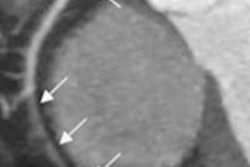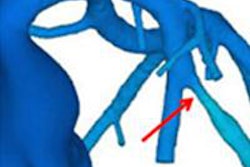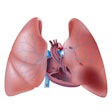Squeezing great images from tiny radiation doses is, of course, a central theme at this year's RSNA 2013 meeting. But it's how the researchers do it -- and how they marry dose savings to other advances in CT technology -- that are the real stars of the Chicago show.
In a week packed with scientific presentations, exhibitions, special courses, and hot topic sessions, attendees at RSNA 2013 will have plenty of opportunities to broaden their knowledge of emerging techniques such as spectral CT, perfusion imaging, iodine mapping, tissue composition analysis, automated tube current selection, flow mapping, and the intricacies of contrast dose and iterative reconstruction.
For combat training there are controversy sessions: for example, discussions about whom to screen for lung cancer, how much it costs to save a life, and what radiation risk really means in light of recent research.
Start on Sunday morning with a presentation on what happens when radiologists examine pregnant women with suspected pulmonary embolism using a shorter scan length that avoids the riskiest anatomy (11:05 a.m.-11:15 a.m., SSA05-03, Room N228).
Then there's a study on dose reduction resulting from automated tube potential selection in neck CT (Sunday, 10:45 a.m.-10:55 a.m., SSA16-01, Room N227), and another on how iterative reconstruction affects coronary plaque characterization (Sunday, 11:25 a.m.-11:35 a.m., SSA02-05, Room S502AB).
Sunday afternoon features an enlightening special exhibition on how single- and dual-source CT protocols affect organ doses to the colon and the CT dose index volume readings that your scanner produces (12:30 p.m.-1:00 p.m., LL-PHE3075-SUA, Lakeside Learning Center).
On Monday morning you can learn how radiologists performed automated analysis of their radiology reports to determine if patients needed a repeat head CT scan (10:50 a.m.-11:00 a.m., SSC12-03, Room N229).
In the afternoon, find out how reporting incidental calcifications on thoracic CT is an integral part of cutting healthcare costs in the new accountable care organizations (3:20 p.m.-3:30 p.m., SSE06-03, Room N227).
Tuesday features a hot topic session on the management of CT-detected adenocarcinomas in light of new management guidelines (7:15 a.m.-8:15 a.m., SPSH30, Room E351). Also on Tuesday, check out a dual-energy breast CT study that shows CT's potential to distinguish benign from malignant tissue far more accurately than mammography (10:40 a.m.-10:50 a.m., SSG14-02, Room S403B).
On Wednesday you can learn about the one-two punch of new CT detector circuitry combined with iterative reconstruction in the always-tricky task of stent assessment (3:50 p.m.-4:00 p.m., SSM20-06, Room S404AB). Also learn how much it really costs to follow up those extracolonic findings in CT (10:30 a.m.-10:40 a.m., SSK05-01, Room E351).
How certain are the experts regarding the uncertainties of radiation exposure and risk? Find out in a controversy session about risk and radiation that could leave you slightly more certain (Wednesday, 4:30 p.m.-6:00 p.m., SPSC42, Room N228).
Then there's lung cancer screening. How much are we willing to pay to find most of the early cases? After all, there are plenty of diseases for the finite dollars of an indebted republic to chase. In that vein, a controversy session that probes the "dollars and sense" of lung cancer screening is sure to be lively (Wednesday, 4:30 p.m.-6:00 p.m., SPSC41, Room E450A).
While we're in the lungs, the management of CT-detected nodules depends increasingly on automated volumetry to assess nodule size and growth and steer patient care. How well does volumetry work with today's ultralow doses, and how much can iterative reconstruction push that dose downward? Find out on Thursday (11:30 a.m.-11:40 a.m., SSQ04-07, Room S405AB).
Also on Thursday, you can learn how fractional flow reserve CT works in a large group of demographically diverse patients (11:30 a.m.-11:40 a.m., SSQ03-07, Room S504AB).
And you might want to end your day with a special session on spectral CT, the emerging technique that's grabbing attention for its ability to distinguish different materials at very low doses. The session wraps up with spectral imaging master Dr. Dushyant Sahani's talk on "killer apps" in spectral CT (Thursday, 3:00 p.m.-4:00 p.m., SPSH56, Room S403B).
Finally, you can finish the week by hearing German researchers talk about voxel-to-voxel mapping of Hounsfield unit values for advanced air-trapping assessment in lung transplant patients (Friday, 10:30 a.m.-10:40 a.m., SST04-01, Room E451B).
We invite you to scroll down for more CT highlights from this year's RSNA meeting. And for a detailed list of abstracts and other presentations at this year's RSNA show, click here.



















